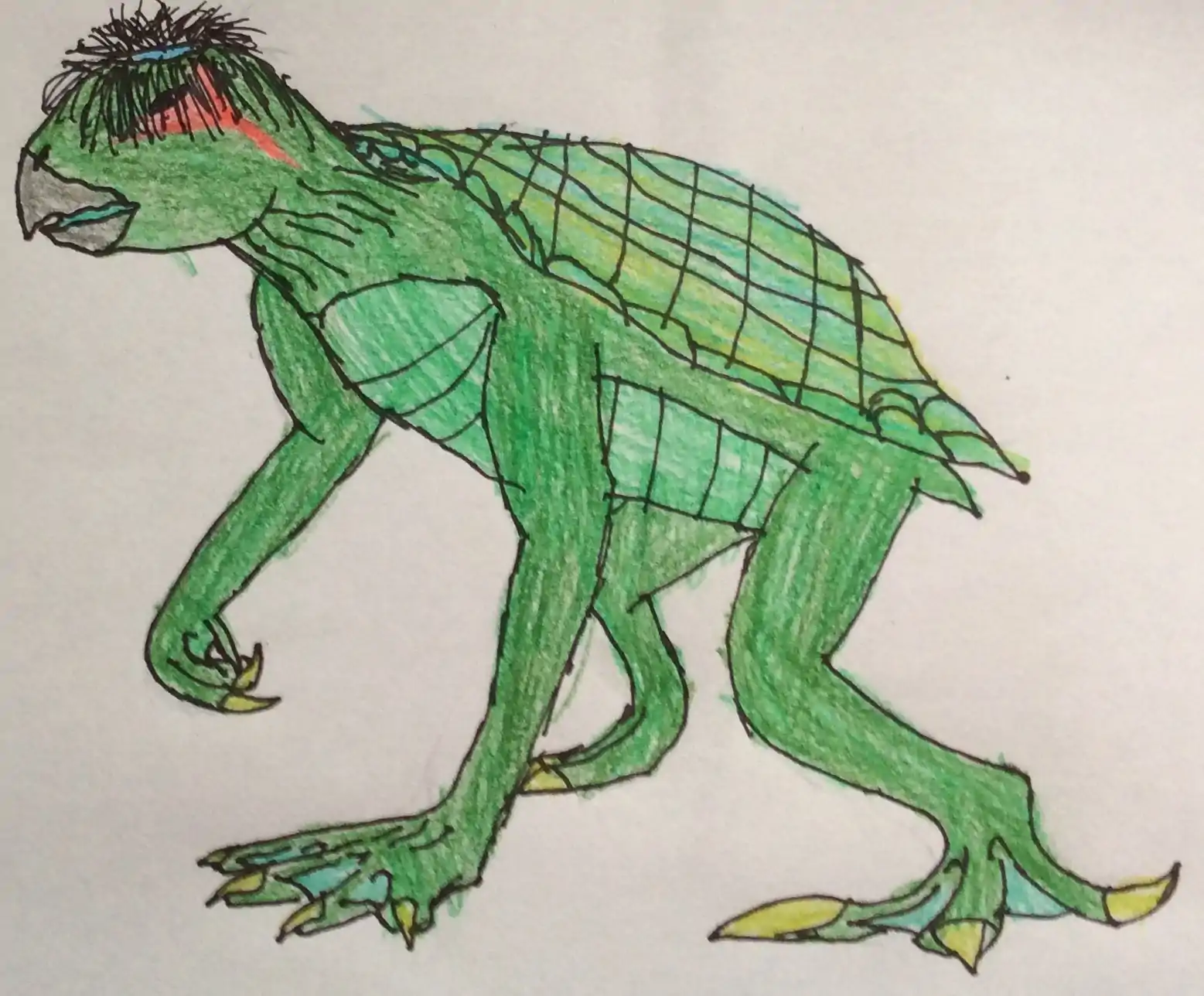Kappa (5e Creature)
Kappa
|
Small fey, lawful neutral (20%), chaotic neutral (60%), or chaotic evil (20%) Armor Class 15 (natural armor)
Skills Athletics +4, Perception +2, Stealth +4 Hold Breath. The kappa can hold its breath for 25 minutes. Nimble Escape. The kappa can take the Disengage or Hide action as a bonus action. Pool of Life. If the kappa spills the water in its plate, the kappa is paralyzed until it is refilled. If the kappa suffers a critical hit or is knocked prone, it must succeed a Dexterity save. The DC equal to half the damage taken, or 10 if no damage was taken. On a failed save the kappa spills the water in its plate. River Child. If the kappa is submerged in water, it regains 4 (1d8) hit points at the start of each of its turns. Spellcasting. The kappa is a 6th level spellcaster. Its spellcasting abillity is Charisma. The kappa can cast faerie fire using a 1st level spell slot and knows the following sorcerer spells: Cantrips (at will): dancing lights, minor illusion, prestidigitation, light, friends Underwater Camouflage. The kappa has advantage on Dexterity (Stealth checks made while underwater. Wrestler. The kappa has advantage on Strength (Athletics) checks to initiate or escape a grapple and can make one as a bonus action. ACTIONSMultiattack. The kappa makes two attacks. Bite. Melee Weapon Attack: +4 to hit, reach 5 ft., one target. Hit: 9 (2d6 + 2) piercing damage. Claws. Melee Weapon Attack: +4 to hit, reach 5 ft., one target. Hit: 7 (2d4 + 2) slashing damage. Fey Connection. The kappa magically enters the Feywild from the Material Plane or vice versa. Withdraw. The kappa withdraws its head and limbs into its shell. While the kappa is withdrawn, it has a +5 bonus to AC, but it cannot move or perform any actions, and can only see in front of it. The kappa may exit its shell as a bonus action.
|
The river is a symbol of beauty and life. Its constant flow invites a feeling of calm and serenity. However, rivers are also dangerous and parents warn children of going to close to the river, not only because of drowning but also for the creatures that lie beneath the surface. One of the strangest by far, it is not wrong to call the kappa an enigma. River Child. A kappa is a child-sized fey being, resembling a humanoid turtle. They have a powerful beak and a head of thin, wiry hair lining an indentation in the skull roof, which holds a pool of water. This pool on top of the kappa's head is sometimes regarded as the source of a kappa's supposed mystical powers. This notion is incorrect, but the pool is absolutely necessary for a kappa to go about its life; if the kappa is away from a water source, this indentation must have water in it at all times. If the water in the pool is spilled or removed, the kappa will enter a state of paralysis and become unable to move. Polite Pranksters. Kappa are common residents throughout the Feywild and are more likely to be unseelie than seelie, but more often they align themselves with the Innari and the kitsune. They respect their powerful magic and see the Innari as less of a political leader, but more as a parental figure. They know better than the kappa what power is and the kappa seek to learn from them. Needless to say, the feeling isn't mutual; kitsune treat kappa as second class citizens and are often reprimand and scold them for the pettiest of reasons, just on the principle of they know they can get away with it. |
Back to Main Page → 5e Homebrew → 5e Creatures
